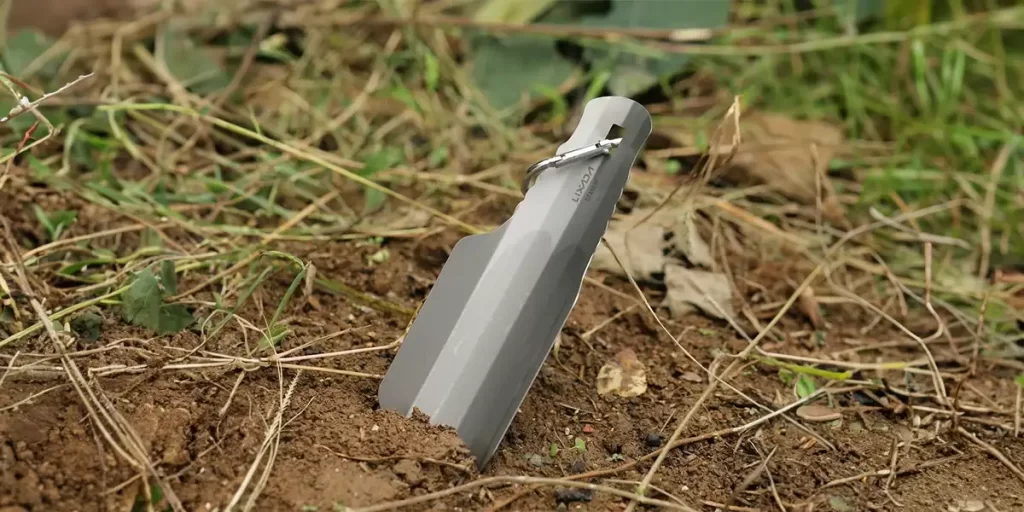

In your hiking journey, the camp bathroom isn’t about bricks and tiles but a space where you answer nature’s call responsibly.
The essential tools for this wilderness etiquette are camping trowels – unassuming yet crucial.
From choosing the right one to using it in harmony with nature, let’s dive into the world of camping trowels and the outdoor bathroom experience.
A camping trowel is a small, handheld tool made for digging small holes, like catholes in the ground. These holes are crucial outdoors—they’re used to responsibly bury human waste, food scraps, and other biodegradable materials.
Ideally, proper catholes should reach a depth of at least 6 inches, coincidentally matching the typical length of most camping trowels, making them the perfect tool for measuring and creating an appropriate hole.

Selecting the right camping trowel is a critical decision for any outdoor enthusiast. In this chapter, we’ll delve into the key factors to consider when choosing a trowel.
Trowels are straightforward tools. By caring for your camping trowel, you actively help preserve the wilderness and promote responsible outdoor practices.
So make sure to clean your trowel: after each use, it’s crucial to clean and sanitize your camping trowel. This not only helps maintain its function but also prevents the spread of harmful bacteria in the wilderness. Use water and a brush to remove dirt, soil, and any remnants of waste.
For better hygiene, think about using biodegradable soap. When cleaning your trowel, make sure to rinse it thoroughly, leaving no soap residue. As ultralight backpackers, we might not always carry soap, but we wash our tools periodically, especially when at well-equipped campsites.
In the wild, your camp bathroom plays a crucial role in responsible hiking, with the unsung hero being the camping trowel.
We’ve covered its basics and essential selection criteria. Your choice matters, influencing your ability to practice Leave No Trace principles.
Remember, responsible camping extends to caring for your tools, including your trowel. By safeguarding it, you actively contribute to preserving the wilderness and promoting responsible outdoor habits.
Interested? You can also check out our TOP 5 Guide for the lightest camping trowels on the market.
Yes, while camping, it’s recommended to bury toilet paper along with your waste. This should be done in a cathole, dug to the recommended depth of at least 6-8 inches, to ensure proper decomposition and adhere to Leave No Trace principles.
Yes, carrying a trowel while hiking is highly advisable. A hiking trowel is a versatile tool that plays a crucial role in Leave No Trace ethics. It’s used to dig proper catholes for responsible waste disposal, ensuring minimal environmental impact. Investing in a quality hiking trowel is not only environmentally responsible but also ensures that you can follow ethical outdoor practices while enjoying the wilderness.